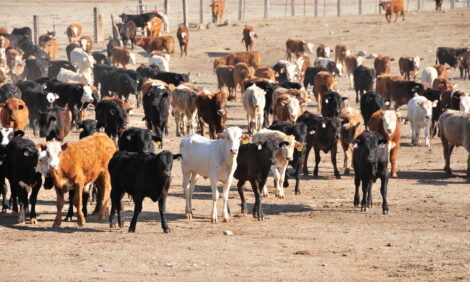



Consumer Demand for High-Quality Beef Strong, Growing
US - "Beef. It's What's For Dinner" rang true in 2018 as beef prices remained strong and consumers regularly visited the meat case.According to the latest retail sales data from IRI/Freshlook, beef demand is up 15 percent since 2012.i
Strong consumer beef demand is expected to continue into 2019, with the USDA predicting consumers in the United States will eat 8.9 percent more beef this year than in 2015.ii
Much of beef's demand is driven by ground beef and loin cuts, which are particularly popular with consumers at the grocery store.iii
Not only are consumers eating more beef, they are also enjoying more high-quality beef. This is due to more cattle in the US herd grading higher than ever before.
"Cattle farmers and ranchers, and the entire beef industry, have worked particularly hard during the past ten years to produce higher-quality beef, and that work is clearly paying off with increased consumer demand," said Bridget Wasser, Executive Director of Meat Science & Supply Chain Outreach for the National Cattlemen's Beef Association (NCBA), a contractor to the Beef Checkoff.
"We're seeing demand for USDA Choice and Prime beef grow, signaling consumer desire for a higher-quality product.
"An increase in the size of the US cattle herd paired with a higher-quality beef supply shows the industry is responding."
Beef demand isn't only strong at retail. Ninety-seven percent of foodservice establishments report having beef on the menuiv, which has been shown to increase restaurant traffic by 45 percent.v
From restaurants to retail, consumers clearly want beef on their plates. With beef supply on the upswing and consumer demand increasing, the beef industry is gaining momentum, and this trend looks to show no signs of slowing down in 2019.
More information on all things beef, including cuts and recipes, is available at BeefItsWhatsForDinner.com.
i IRI/Freshlook retail sales data is available with 5-6 years of history, hence, the January 2012 starting date for these indices.
ii USDA ERS Livestock & Meat Domestic Data; USDA WASDE 7/12/18.
iii Source: Tonsor, Schroeder, Creating and Assessing Candidate Food Service and Retail Beef Demand Indices, January 2017. IRI/Freshlook, Total US MULO ending 10/26/18; Categorized by VMMeat System.
iv 2017 Usage and Volumetric Assessment of Beef in Foodservice study.
v USDA World Agriculture Supply and Demand estimates (WASDE), 8 March 2018.
TheCattleSite News Desk


